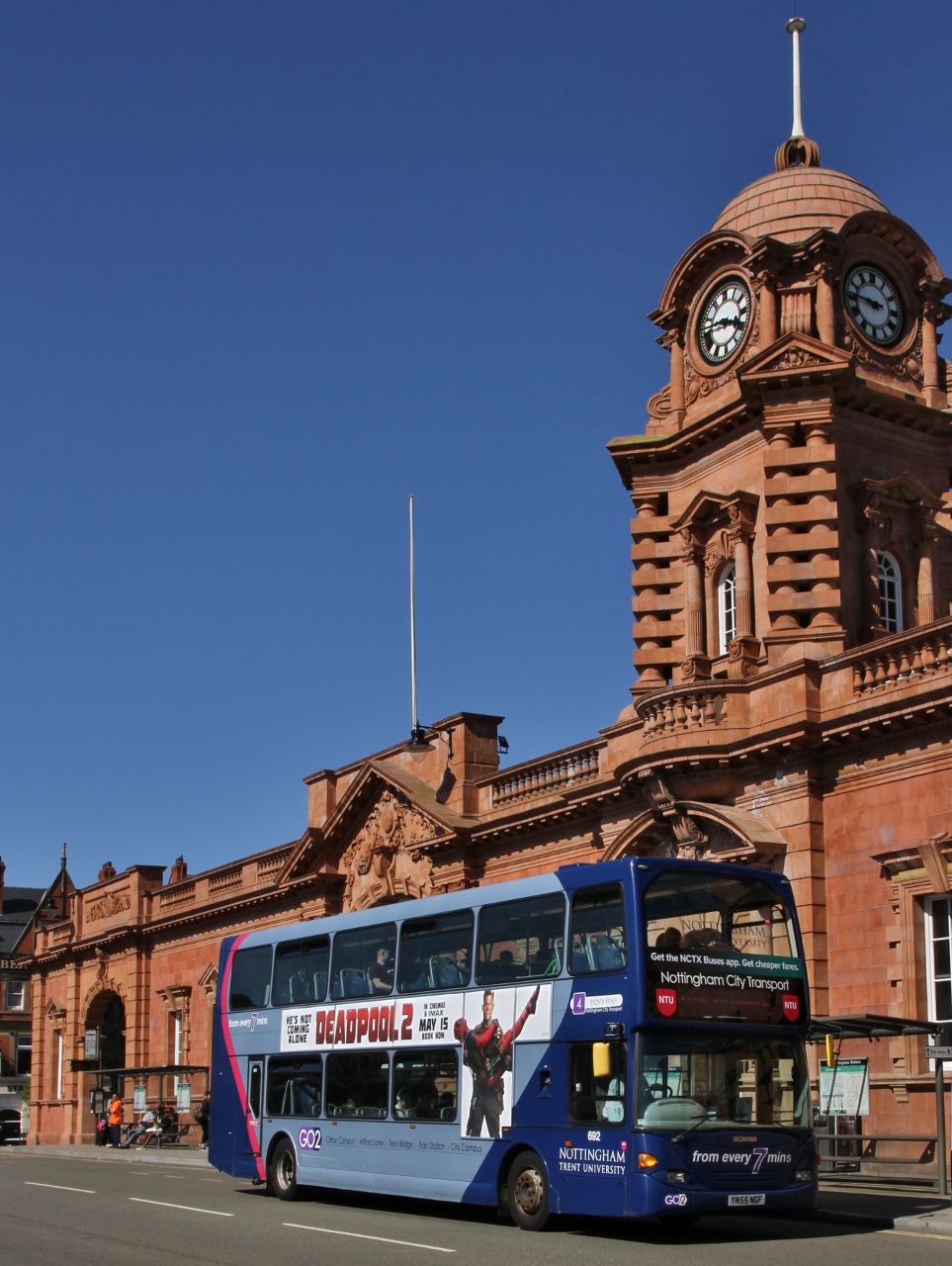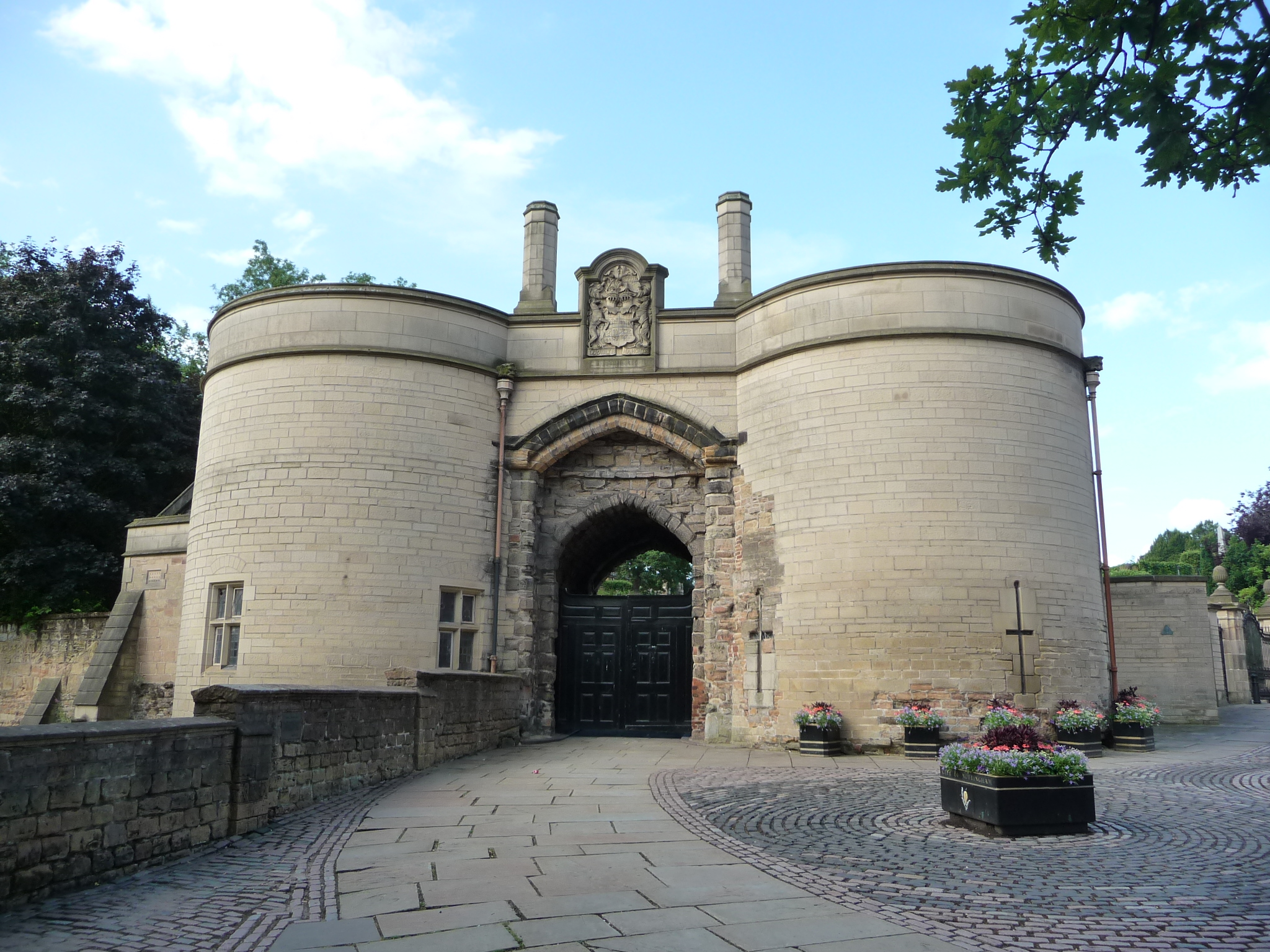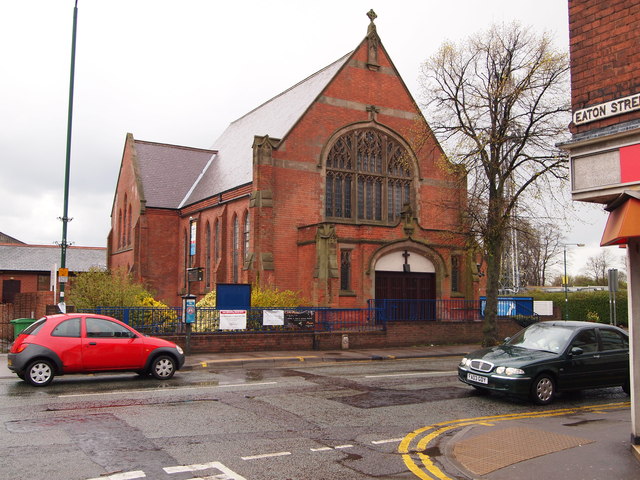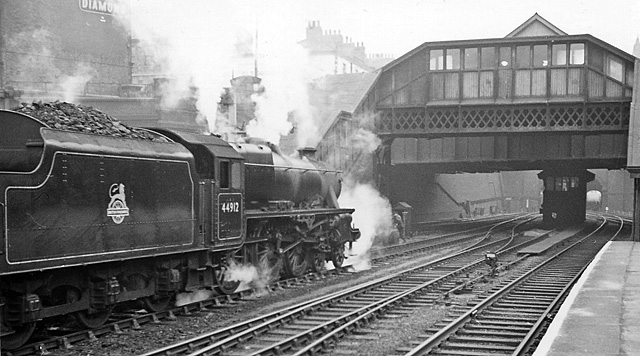|
Nottingham Station
Nottingham station, briefly known as Nottingham City and for rather longer as Nottingham Midland, is a railway station and tram stop in the city of Nottingham. It is the principal railway station of Nottingham. It is also a nodal point on the city's Nottingham Express Transit, tram system, with a tram stop that was originally called Station Street but is now known as Nottingham Station. It is the busiest station in Nottinghamshire, the busiest in the East Midlands, and the second busiest in Midlands, the Midlands after Birmingham New Street station, Birmingham New Street. The station was first built by the Midland Railway (MR) in 1848 and rebuilt by the same company in 1904, with much of the current building dating from the later date. It is now owned by Network Rail and managed by East Midlands Railway (EMR). Besides EMR trains, it is also served by CrossCountry and Northern (train operating company), Northern trains and by Nottingham Express Transit (NET) trams. The station ... [...More Info...] [...Related Items...] OR: [Wikipedia] [Google] [Baidu] |
Nottingham
Nottingham ( , East Midlands English, locally ) is a City status in the United Kingdom, city and Unitary authorities of England, unitary authority area in Nottinghamshire, East Midlands, England. It is located south-east of Sheffield and north-east of Birmingham. Nottingham is the legendary home of Robin Hood and to the lace-making, bicycle and Smoking in the United Kingdom, tobacco industries. The city is also the county town of Nottinghamshire and the settlement was granted its city charter in 1897, as part of Queen Victoria's Diamond Jubilee celebrations. In the 2021 United Kingdom census, 2021 Census, Nottingham had a reported population of 323,632. The wider conurbation, which includes many of the city's suburbs, has a population of 768,638. It is the largest urban area in the East Midlands and the second-largest in the Midlands. Its Functional Urban Area, the largest in the East Midlands, has a population of 919,484. The population of the Nottingham/Derby metropolitan a ... [...More Info...] [...Related Items...] OR: [Wikipedia] [Google] [Baidu] |
Northern (train Operating Company)
Northern Trains, Trade name, trading as Northern, is a British train operating company that operates Commuter rail, commuter and Inter-city rail, medium-distance intercity services in the North of England. It is owned by DfT Operator for the Department for Transport (DfT), after the previous operator Arriva Rail North had its franchise terminated at the end of February 2020. The company commenced operating the Northern franchise on 1 March 2020, taking over from Arriva Rail North. The prior operator had its franchise terminated early by the DfT in January 2020 amid widespread dissatisfaction over its performance, particularly in respect of poorly implemented timetable changes. The DfT had opted to hand the operation of the franchise over to the operator of last resort. At the commencement of operations, Northern publicly stated that its immediate aims were to improve service reliability and to proceed with the introduction of new rolling stock. For the latter, both the British Ra ... [...More Info...] [...Related Items...] OR: [Wikipedia] [Google] [Baidu] |
Carrington Street, Nottingham
Carrington Street is a street in Nottingham city centre between Nottingham station and Broadmarsh. History The street was laid out by Henry Moses Wood, Surveyor in 1828. The opportunity offered by the construction of this new road was taken to install a large culvert in circumference as a storm drain, to carry water to the River Leen. The River Leen was dredged by approximately to provide additional capacity. In 1842 a bridge was constructed over the Nottingham and Beeston Canal to provide access to Nottingham Carrington Street railway station. The bridge costing £6,000 () was partly sponsored by the Midland Counties' Railway. It contained an inscription which read: This bridge was commenced in August, 1841, J.M.B. Pigot M.D., Mayor, and completed in October, 1842, R. Morley Esq., Mayor, H.M. Wood, Architect. The bridge was widened in 1904 when the new Nottingham station was erected. Having crossed the canal, the street arrived at Nottingham Carrington Street railwa ... [...More Info...] [...Related Items...] OR: [Wikipedia] [Google] [Baidu] |
Albert Edward Lambert
Albert Edward Lambert, FRIBA (27 May 1869 – 5 November 1929) was a British architect based in Nottingham, England. Biography He was born in Manton in Rutland on 27 May 1869. He was the son of John Lambert and Louisa. By 1871 the family had moved to Draycott in Derbyshire and in 1881 the family were living at the Grocers Shop & Cottage, Wetheral, Cumberland, England. In the 1891 census, he was living in Derby, with his mother Louisa, and brother George. Lambert's profession is given as architect's assistant. He married Annie Elizabeth Robinson, daughter of butcher and farmer Michael H. Robinson and Ann, at the end of 1897. His daughter Jessie Kathleen was born on 18 April 1901. He died at home on 5 November 1929 of encephalitis lethargica, diagnosed 5 years earlier. Career By 1901 and until at least 1926 he had offices first at 22 and later at 28 Park Row, Nottingham. He was a Member of the Society of Architects in 1911, Fellow in 1924 and Fellow of the Royal Institute ... [...More Info...] [...Related Items...] OR: [Wikipedia] [Google] [Baidu] |
Nottingham Victoria Railway Station
Nottingham Victoria railway station was a Great Central Railway and Great Northern Railway (Great Britain), Great Northern Railway railway station in Nottingham, England. It was designed by the architect Albert Edward Lambert, who also designed the rebuild of the Nottingham Midland station (now known simply as Nottingham station). It was opened by the Nottingham Joint Station Committee on 24 May 1900 and closed on 4 September 1967 by the London Midland Region, London Midland Region of British Railways. The station building was entirely demolished (except the clock tower), and the Victoria Centre, Nottingham, Victoria Centre shopping centre was built on the site, incorporating the old station clock tower into the main entrance on Milton Street (the continuation of Mansfield Road). Background In 1893 the Manchester, Sheffield and Lincolnshire Railway obtained authorisation to extend its North Midlands railway network into London. This new line was opened on 15 March 1899 (by whi ... [...More Info...] [...Related Items...] OR: [Wikipedia] [Google] [Baidu] |
Nottingham Midland Station, Nottingham - Geograph
Nottingham ( , locally ) is a city and unitary authority area in Nottinghamshire, East Midlands, England. It is located south-east of Sheffield and north-east of Birmingham. Nottingham is the legendary home of Robin Hood and to the lace-making, bicycle and tobacco industries. The city is also the county town of Nottinghamshire and the settlement was granted its city charter in 1897, as part of Queen Victoria's Diamond Jubilee celebrations. In the 2021 Census, Nottingham had a reported population of 323,632. The wider conurbation, which includes many of the city's suburbs, has a population of 768,638. It is the largest urban area in the East Midlands and the second-largest in the Midlands. Its Functional Urban Area, the largest in the East Midlands, has a population of 919,484. The population of the Nottingham/Derby metropolitan area is estimated to be 1,610,000. The metropolitan economy of Nottingham is the seventh-largest in the United Kingdom with a GDP of $50.9 bi ... [...More Info...] [...Related Items...] OR: [Wikipedia] [Google] [Baidu] |
Scania OmniDekka YN55 NGF Nottingham CarringtonSt
Scania ( ), also known by its native name of Skåne (), is the southernmost of the historical provinces () of Sweden. Located in the south tip of the geographical region of Götaland, the province is roughly conterminous with Skåne County, created in 1997. Like the other historical provinces of Sweden, Scania still features in colloquial speech and in cultural references, and can therefore not be regarded as an archaic concept. Within Scania there are 33 municipalities that are autonomous within the Skåne Regional Council. Scania's largest city, Malmö, is the third-largest city in Sweden, as well as the fifth-largest in Scandinavia. To the north, Scania borders the historical provinces of Halland and Småland, to the northeast Blekinge, to the east and south the Baltic Sea, and to the west Öresund. Since 2000, a road and railway bridge, the Öresund Bridge, bridges the Sound and connects Scania with Denmark. Scania forms part of the transnational Øresund Region. From no ... [...More Info...] [...Related Items...] OR: [Wikipedia] [Google] [Baidu] |
Nottingham Station's Art Nouveau Gates
Nottingham ( , locally ) is a city and unitary authority area in Nottinghamshire, East Midlands, England. It is located south-east of Sheffield and north-east of Birmingham. Nottingham is the legendary home of Robin Hood and to the lace-making, bicycle and tobacco industries. The city is also the county town of Nottinghamshire and the settlement was granted its city charter in 1897, as part of Queen Victoria's Diamond Jubilee celebrations. In the 2021 Census, Nottingham had a reported population of 323,632. The wider conurbation, which includes many of the city's suburbs, has a population of 768,638. It is the largest urban area in the East Midlands and the second-largest in the Midlands. Its Functional Urban Area, the largest in the East Midlands, has a population of 919,484. The population of the Nottingham/Derby metropolitan area is estimated to be 1,610,000. The metropolitan economy of Nottingham is the seventh-largest in the United Kingdom with a GDP of $50.9 bil ... [...More Info...] [...Related Items...] OR: [Wikipedia] [Google] [Baidu] |
Nottingham Magistrates' Court
Nottingham Magistrates' Court is a magistrates' court (England and Wales), magistrates' court in Nottingham, England. History Until 1996, Nottingham magistrates were housed in two separate buildings, the Guildhall and the Shire Hall. In 1996, all magistrates were moved to the new Nottingham Magistrates' Court building, and the old buildings were closed. The Shire Hall subsequently was converted into the Galleries of Justice. The Nottingham Guildhall was occupied by Nottingham City Council until 2010. Description The building was designed by the Nottingham County Council Architect's Department with William Saunders Partnership and Cullen, Carter and Hill.Pevsner Architectural Guides. Nottingham. Yale University Press. . It sits on the site of Nottingham Carrington Street railway station and the gateposts still frame the pathway from Carrington Street to the court. There are 18 courtrooms in the main block, with six courtrooms in the Youth and Family block. The complex of bu ... [...More Info...] [...Related Items...] OR: [Wikipedia] [Google] [Baidu] |
Derby Railway Station
Derby railway station (, also known as Derby Midland) is a main line railway station serving the city of Derby in Derbyshire, England. Owned by Network Rail and managed by East Midlands Railway, the station is also served by CrossCountry services. It is the busiest station in Derbyshire, and the third busiest station in the East Midlands. It lies north of London St Pancras. It is situated to the south-east of Derby city centre, and is close to the west bank of the River Derwent. Overview The decision by the Midland Railway to have its headquarters in Derby made the town a busy node of the rail network. First opened in 1839, it was at the time one of the largest stations in the country, and was unusual for being shared by more than one company. Until its closure in 1990, Derby Railway Works, consisting of major carriage and locomotive workshops, as well as the Research Division in the Railway Technical Centre were housed there. The station is an interchange point between ... [...More Info...] [...Related Items...] OR: [Wikipedia] [Google] [Baidu] |
Midland Counties Railway
The Midland Counties' Railway (MCR) was a railway company in the United Kingdom which existed between 1839 and 1844, connecting Nottingham, Leicester and Derby with Rugby, Warwickshire, Rugby and thence, via the London and Birmingham Railway, to London. The MCR system connected with the North Midland Railway and the Birmingham and Derby Junction Railway in Derby at what become known as the Derby Midland railway station#History, Tri Junct Station. The three later merged to become the Midland Railway. The part of the MCR line between Nottingham, Derby and Leicester is still in use as part of the Midland Main Line, the part of the route from Leicester to Rugby however was closed in the 1960s. Origin The East Midlands had for some years been at centre of Derby Midland railway station#Early East Midlands railway schemes, plans to link the major cities throughout the country. However, the MCR came about as a result of competition to supply coal to Leicester, a town which was rapidly ... [...More Info...] [...Related Items...] OR: [Wikipedia] [Google] [Baidu] |









